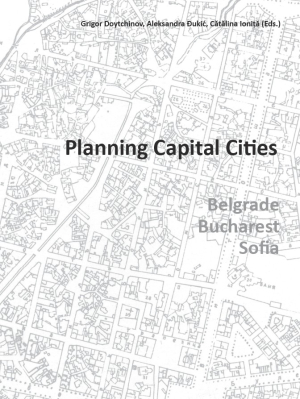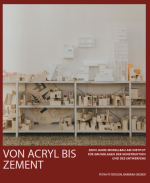The aim of the publication is to detect some uniform ideas in the
urbanism of Belgrade, Bucharest and Sofia and to point out equal ideas
as marks of the uniformity. The assumption that the urbanism of the
three capitals shows semantic links is based on some frame conditions,
offering arguments for a cultural unification: The primary factor for
the similarity is the regional neighborhood as a factor for co-existence
and interferences. The secondary factor is the comparable urban
history. Both factors are a precondition for a similar urban shape
organization and a cultural heritage in its broad sense. Some historical
facts offer convincing arguments for the analogy and, respectively,
their differentiation from the Central and Western European capitals and
examination as related objects of research: the Ottoman rule as the
pre-modern period, the delayed infiltration of the capitalist economy
and nation building, the European cultural influences, dominating since
the 19th century and finally the unstable geopolitical order of the
region, which reflects on the principles of urbanism. The review is
carried on chronologically and points out the approximation and
dissociation of the ideas in the urbanism of the capitals phase-wise.
Belgrade Bucharest Sofia
Issue: Open Access E-Book
ISBN: 978-3-85125-399-3
Language: Englisch
Release date: June 2015
The aim of the publication is to detect some uniform ideas in the
urbanism of Belgrade, Bucharest and Sofia and to point out equal ideas
as marks of the uniformity. The assumption that the urbanism of the
three capitals shows semantic links is based on some frame conditions,
offering arguments for a cultural unification: The primary factor for
the similarity is the regional neighborhood as a factor for co-existence
and interferences. The secondary factor is the comparable urban
history. Both factors are a precondition for a similar urban shape
organization and a cultural heritage in its broad sense. Some historical
facts offer convincing arguments for the analogy and, respectively,
their differentiation from the Central and Western European capitals and
examination as related objects of research: the Ottoman rule as the
pre-modern period, the delayed infiltration of the capitalist economy
and nation building, the European cultural influences, dominating since
the 19th century and finally the unstable geopolitical order of the
region, which reflects on the principles of urbanism. The review is
carried on chronologically and points out the approximation and
dissociation of the ideas in the urbanism of the capitals phase-wise.





